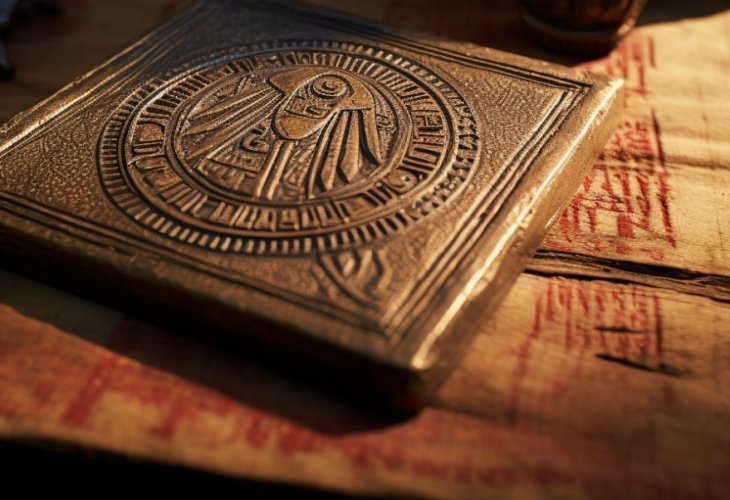Biblical Archaeology: Did We Discover Joseph's Seal?
In a fascinating discovery in Egypt, an ancient palace was found with significant markings of the number 12. Its main hall is supported by 12 pillars, with 12 prominent tombstones in the burial complex. Could this be Joseph's palace, marking the 12 tribes of Israel?

About fifty years ago, the archaeologist Manfred Bietak excavated in Avaris, Egypt. Avaris served as the capital of an ancient Egyptian dynasty approximately 3,600 years ago, the 21st Dynasty.
The architectural style, decorations, and Egyptian culture are well-known among researchers. Avaris matches all these characteristics—except for a central structure.
This structure, resembling a palace, according to its features, belonged to a high-ranking official of the kingdom. However, the paintings and inscriptions indicate that this official was Semitic, not of the Egyptian race, which is known from the descendants of Ham. The Egyptians depicted themselves in their natural color, chocolate brown, while the Semites were painted in a lighter hue. The remnants of tools in the palace and its burial complex are tools from Canaan, not Egyptian tools.
The clothes of this official are illustrated in an extraordinary way. Instead of the classic Egyptian dress, he is depicted in a multi-colored striped coat and red hair. In his hand, he holds a staff, also seen as a symbol of the Semites.
Surprisingly, a pyramid was built in his residential complex in his honor. There is no other example of a pyramid built for a non-Egyptian, as the pyramid was a sacred symbol for the Egyptians. In this pyramid, no coffin was found.
Many researchers identify Avaris as the land of Goshen mentioned in the Torah.
In 2004, Dorothea Arnold, chair of the Egyptian Art Department at the British Museum, declared that some researchers have concluded that this prominent Semitic official was Joseph. The name of the official residing in this palace according to the inscriptions was "Anku", reminiscent of "Zaphenath-Paneah". This assumption also explains the absence of the burial vault—Joseph's coffin was taken to the Land of Israel by Moses and the Israelites.
Researchers paid less attention to a unique seal found in the palace. However, Rabbi Michael Bar Ron from Beit Shemesh, in an article published years ago, suggests that this might indeed be Joseph's seal. The first figure on the seal, in the upper right hand side, is that of a bull raising its head and its vast horns, reminiscent of Moses's words about the Tribe of Joseph, "His firstling bull—majesty is his, his horns are the horns of a wild ox; with them he gores the peoples all together." The Rabbi analyzes the different symbols on the seal, suggesting they may be referencing the symbols of the tribes as described in the Torah and by the sages, in chronological order.
Bar Ron notes in his article that one researcher, who usually publicly denies the alignment of archaeology with tradition, admitted confidentially that it might indeed be the remains of Joseph's palace and possessions...

